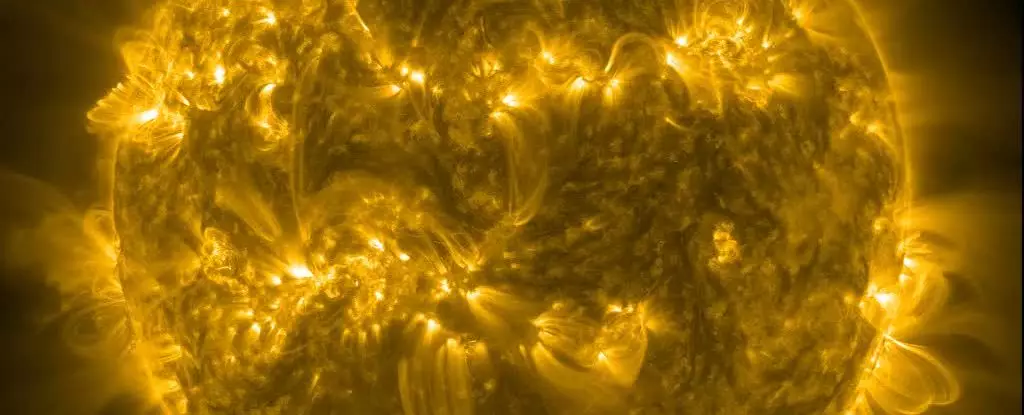The Sun’s activity is a multifaceted phenomenon that pulses with different rhythms based on various periodicities. With many of these solar heartbeats being driven by unknown factors, recent research has reignited a connection with the planets of the Solar System. According to a team of researchers led by physicist Frank Stefani from the Helmholtz-Zentrum Dresden-Rossendorf lab in Germany, the Sun’s 11-year activity cycle, known as the Schwabe cycle, could potentially be partially explained by a gravitational interaction between the Sun and the planets Venus, Earth, and Jupiter.
While the Sun’s activity is mainly internally driven, external influences such as planetary interactions may also play a role. Stefani likens the Sun to a gigantic dynamo, generating its own 11-year activity cycle. However, the planets’ gravitational pull is believed to intervene in this process, providing periodic nudges that result in the stable 11.07-year rhythm observed in the Sun’s activity cycles.
Roughly every 11 years, the Sun transitions through phases of heightened and reduced activity. The solar minimum represents a period of low activity, while the solar maximum marks a peak in solar flares, sunspots, and coronal mass ejections. The Sun is currently approaching a solar maximum, with frequent flares and geomagnetic storms keeping space weather enthusiasts on their toes.
At solar minimum, a unique alignment occurs approximately every 11.07 years, where Venus, Earth, and Jupiter line up to exert a combined gravitational force on the Sun. While this influence is relatively weak, it is speculated to synchronize the Sun’s internal dynamo with regular activity cycles. Recent discoveries of Rossby waves in the Sun provide further support for this theory, as these vortical waves are believed to play a role in transferring energy and maintaining cycle synchronization.
By conducting mathematical modeling, Stefani’s team was able to replicate both the Schwabe cycle and the shorter Rieger cycles, which are characterized by 150 to 160-day fluctuations in solar flare activity. Not only did the alignment of Venus, Earth, and Jupiter coincide with these cycles, but even the alignment of any two of these planets was found to have a gravitational impact significant enough to activate Rossby waves. These alignments have been observed to correlate with the Rieger cycles, reinforcing the potential link between planetary configurations and solar behavior.
In addition to the Schwabe and Rieger cycles, researchers also identified a longer-term cycle known as the Suess-de Vries cycle, occurring approximately every 193 years. This cycle is believed to arise from the alignment of the Sun’s periodic motion around the Solar System’s center of gravity with the Hale cycle, resulting in fluctuations in the strength of the solar magnetic field. The team’s comprehensive model successfully captured the Suess-de Vries cycle, further strengthening the argument for planetary influences on solar activity.
While the research findings suggest a compelling relationship between planetary alignments and solar cycles, scientists acknowledge the complexity of the Sun’s behavior. The sheer size and intricacy of the Sun introduce numerous variables into the equation, with planetary influences representing only a part of the larger picture. As researchers continue to gather data and refine their models, the extent of the planets’ impact on the Sun’s activity cycle may become clearer.
The investigation into the connection between planetary movements and the Sun’s activity cycle provides a fascinating glimpse into the mechanisms shaping our star. While there is still much to learn and explore in this field of study, the emerging evidence of planetary influences on solar behavior opens up new avenues for understanding the dynamics of our solar system.


Leave a Reply